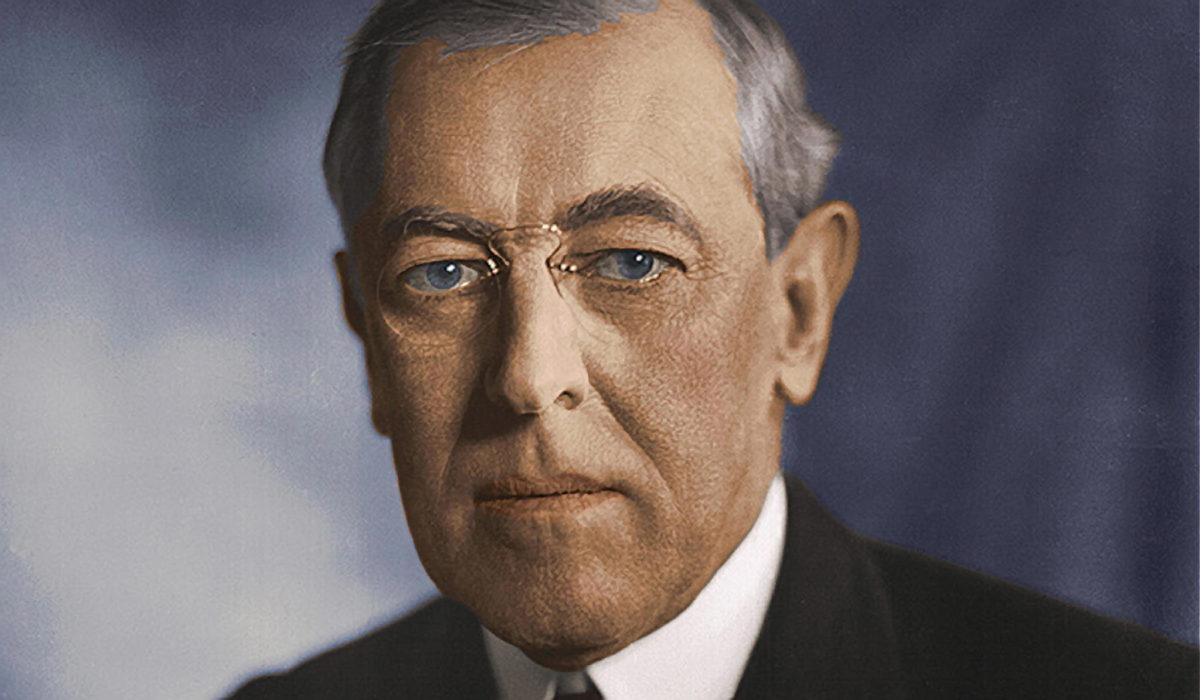A BRIGHT LOG FIRE warmed the parlor of a cottage on Cleveland Lane in Princeton, New Jersey. A few guests sat in front of the fireplace, sharing some meaningful moments.
Their host stood with his back to the fire, his hands clasped behind him. He was a professorial type, fifty-six years old next month, with a long narrow face, a prominent jaw, fine grey hair, and an angular nose — often called a “beak” by the newspapers — that was usually seen to be graced with a pair of pince-nez. At ten o’clock a tall woman with dark hair stepped quickly into the room; the firelight glimmered in her tears. She had just come from the dining room, where the journalists had installed the telegraph machine. She placed her hand lightly on her husband’s shoulder and kissed him. “My dear,” Mrs. Wilson said, “I want to be the first to congratulate you.”
It was Election Day, Tuesday, November 5, 1912. Fifty miles to the northwest, record crowds packed Times Square in New York. “Among the lights of Broadway’s electric signs there shot forth darts of white light,” the New York Times reported. “They came from the top of The Times tower, and the light was all white, denoting a Democratic landslide.” At 5:02 p.m., two minutes after the polls had closed, the first returns from Massachusetts flashed up on three synchronized bulletin boards inside the north and east windows of the Times Building. As the operator received the latest results from the newsroom, he typed them out on an electrical device which then printed the news onto three large sheets of scrolling paper, in letters three inches high. Within five minutes, 5,000 people had rushed to the sidewalk. By six o’clock there were 10,000; fifteen minutes after that, 15,000; and the crowd continued to grow until more than 100,000 people filled the square.

At the northeast corner of the building, a revolving bulletin board stood thirty feet high, each of its panels written in chalk and lifted above the street by a man turning a crank. “The most popular device, however,” the Times explained, “was the especially erected canvas suspended over the ground windows on the north side of the Times Building. . . . Opaque lantern slides, on which the bulletins were etched in thick, legible style, made it possible for persons to see not only the highly illuminated canvas, but each individual bulletin, from a distance of five blocks.”
Back in Princeton, a thousand undergraduates — all of them male — streamed out of Alexander Hall where they had been following the election returns, paraded up Nassau Avenue which was alight with red fire, and camped outside the President-elect’s house on Cleveland Lane. At 11:30, Woodrow Wilson stepped up onto a chair on the small front porch of his cottage to address his former students. “I have no feeling of triumph tonight,” he said, “but a feeling of solemn responsibility. I know the very great task ahead of me.”
“Prosperity has carried us into devious paths. There is much to reconstruct, and it will take a generation to work out what America must achieve.”
The audience of young men gave the President-elect their college yells. After losing recently to the Harvard football team, Princeton hadn’t had much to cheer about. But now, the New-York Tribune said, “Princeton was satisfied. If it could not win the football championship it had at least elected a President.”






